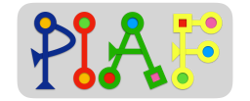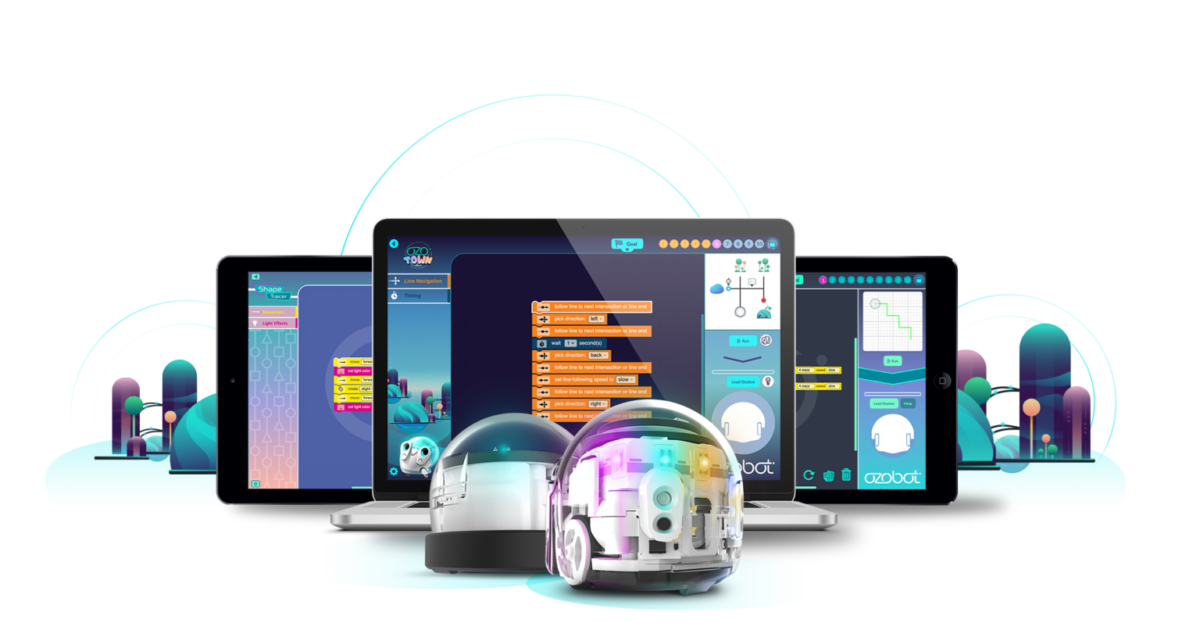Ozobot
Short description
The Ozobot is a “coding robot for K-12 creators” that can be used to learn coding with or without screens. Screen-free programming of the Ozobot’s movements is done with color codes with markers on paper, while the on-screen programming is done with OzoBlockly, a dedicated app that uses a visual programming environment with 5 skill levels.
Material and technical aspects
Ozobot is a (very) small robot that can be programmed using color markers on paper or using an app on a tablet with a wireless connection to it. They use sensors to follow lines and read certain color codes to execute certain special actions (like changing speed, following a given direction or making sounds). The Evo Educator Entry Kit costs about 175€ to buy. The tablet needs to be bought separately and can require a connection to the Internet. The robot can be charged using a standard USB cable. Teachers and parents can download lesson plans and activities from the website.
Content
The Ozobot can be used to learn about a wide range of concepts in coding, programming, and robotics, namely about sequences, loops, advanced sequences and loops, conditional statements, functions, and variables. Teachers will find free to use, ready-made and tested lessons (https://ozobot.com/educate/lessons) and more complex challenges (https://ozobot.com/create/challenges) on their website.
Pedagogical aspects
From a pedagogical point of view, this learning resource uses age-appropriate small robots to teach children young and old about coding, programming, and robots in a fun and creative way. Teachers can choose between the two modes depending on the level of expertise of their students. Using color markers on paper can unleash children’s desire to create intricate and complex paths for the Ozobot to explore. Teachers can have their students find out what the different color code “words” mean by themselves collaboratively and through free or guided discovery. OzoBlockly allows teachers to dig deeper into more complex programming problems and to develop more formal knowledge and skills related to visual programming languages. Overall, this tool allows teachers to adapt its use to their pedagogical approach, be it more closed (learning by imitation) or more open (learning by experimentation, by exploration and by creation).
Conclusion
Overall, Ozobot is a highly recommendable pedagogical resource that offers a wide range of opportunities to teach coding and programming in various ways! Teachers will love the fact that they can find many ready-made and tested lessons and challenges on their website. The prize might be a deterrent, but there are larger kits for schools that different classes can share.

